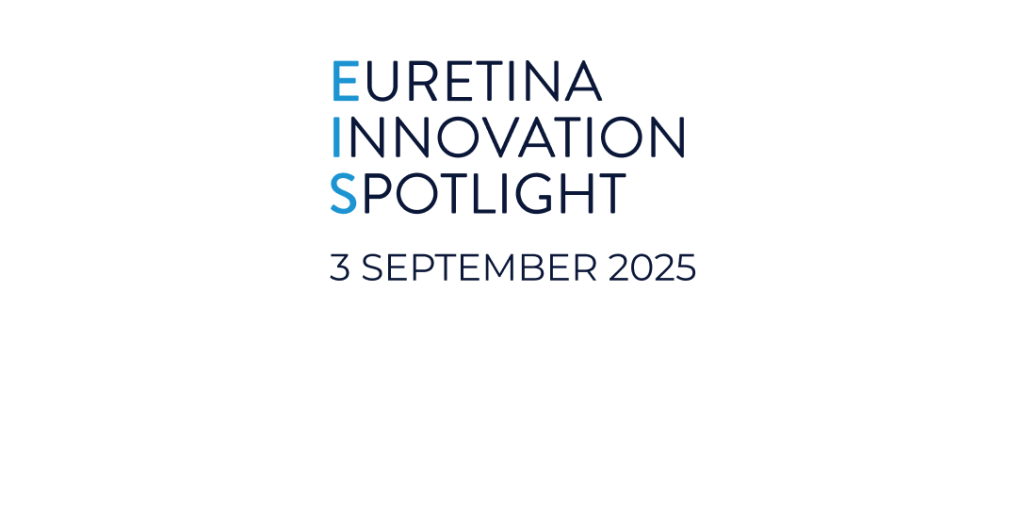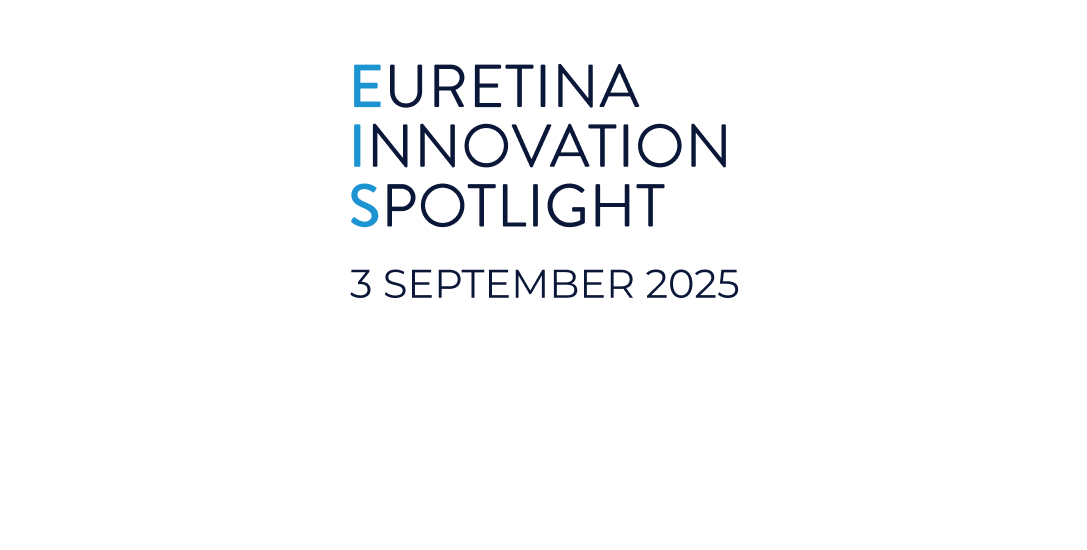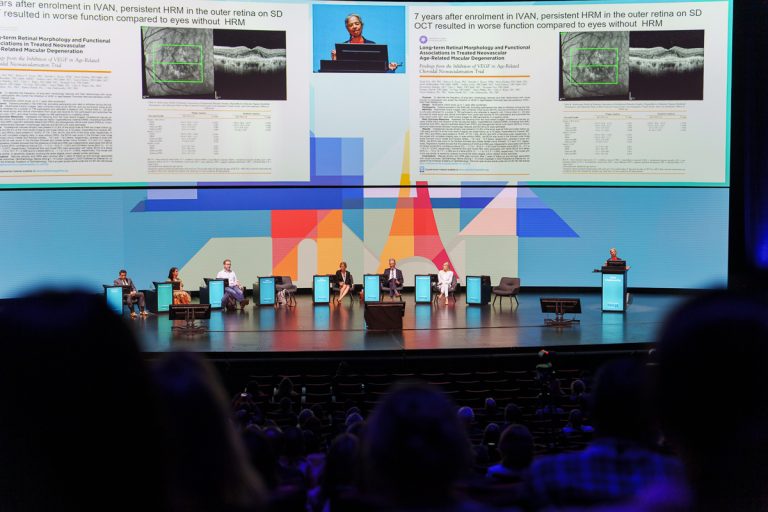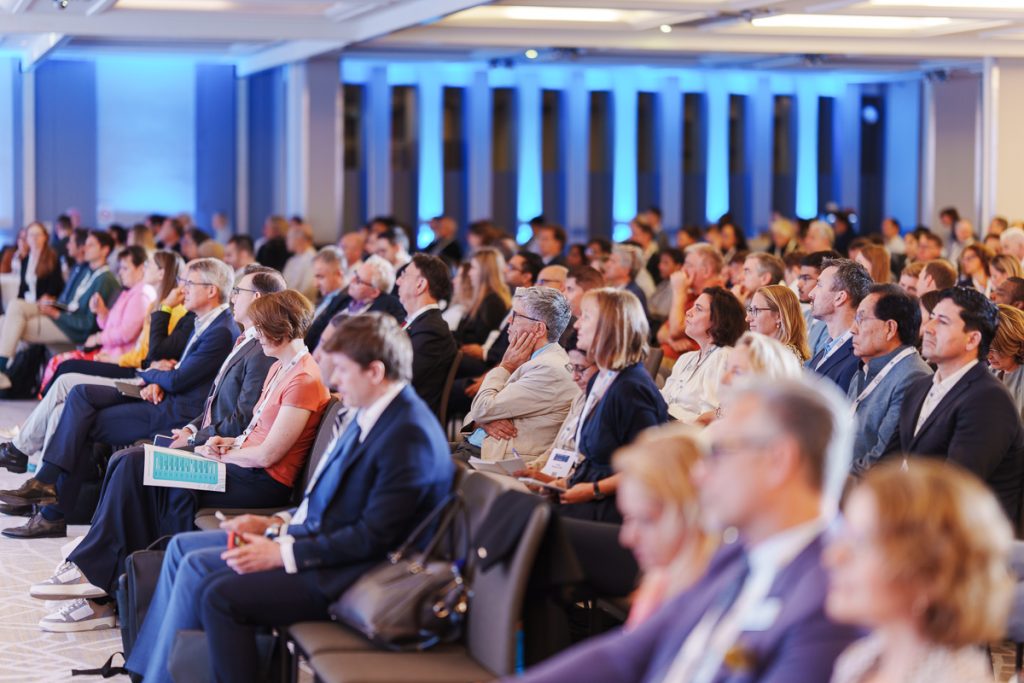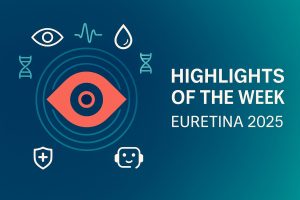Euretina President Dr. Anat Loewenstein welcomed attendees to the first scientific session of the organisation’s annual meeting that was devoted to the topic of non-exudative age-related macular degeneration (AMD).
“Together with Professor Frank Holz, my co-moderator, we have assembled a great group of speakers to tell us whatever is important in non-neovascular AMD,” she said.
The session began with Dr Jordi Mones (Spain) summarising what modalities in the treatment pipeline for dry AMD. He discussed treatments that have targeted dry AMD categorising them by mechanism of action. His take-home message was that most have failed, but some are some are still progressing through clinical trials.
Dr. Mones also listed reasons why it is difficult to find treatment effects in iAMD, noting variability in phenotype and visual acuity along with the phenomenon of soft drusen regression.
He ended with some good news.n“The axioma that RPE restoration is not possible is not true. The retina has some plasticity to recover. We need to find out how to trigger that plasticity.”
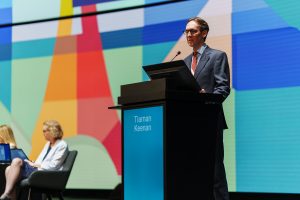
Dr. Tiarnán Keenan (United States) reviewed findings from a recently published paper analysing the effects of AREDS nutritional supplements on the progression of GA.
“We have seen that AREDS supplements are effective to a degree in decreasing the incidence of late AMD, especially neovascular disease, but we have never looked to see if they may have a potential benefit in slowing GA growth.” Dr. Keenan said.
Post-hoc analyses were conducted using data from AREDS1 and AREDS2 looking at GA growth rate and the rate of progression of extrafoveal GA towards the macula center with the rates related back to the underlying study randomisations.
The take-home message was that ARDS1/2 supplements were found to slow the rate of GA enlargement to the macular center by about 55%.
“These are very robust analyses, but they are post-hoc analyses. So, we need to see if we can confirm these, and we are planning a new dedicated prospective randomized controlled trial as part of the AREDS3 programme,” Dr. Keenan said.
Dr. Stela Vujosevic (Italy) discussed functional assessments in dry AMD. She observed that while best corrected visual acuity remains the gold standard, it often does not reflect real-life visual impairment in dry AMD, particularly in individuals with early disease or extrafoveal GA.
Dr. Vujosevic spoke about the role of other functional markers and concluded that functional assessments in dry AMD, especially GA, should include tests like microperimetry, contrast sensitivity, dark adaptometry, reading speed, and patient-reported outcomes, but she also noted that the utility of these tests varies by disease stage/phenotype..
Dr. Vujosevic concluded, “Composite endpoints of structure and function that are tailored to GA progression and patients needs would be ideal for upcoming clinical trials, allowing for earlier intervention. There is a need to establish standardised clinical endpoints for eye research and product development.”
Dr. Robyn Guymer (Australia) spoke about iAMD risk markers and clinical trial endpoints. She reviewed OCT features that have been identified as risk factors for progression to GA and that could help with predicting progression, naming outer retinal bands as a new potential endpoint.
Dr. Guymer concluded, “We are making significant inroads so that we will be in a good position to conduct feasible early interventional trials in iAMD by using high-risk inclusion criteria and early surrogate endpoints. This comes at a time when there are real possibilities of efficacious treatments that need to be evaluated in robust clinical trials.”
The final presentation of the session featured Dr. Maximilian Pfau (Germany) discussing work his group has been doing in developing artificial intelligence (AI) to predict treatment response and functional outcomes. He began by noting that GA is not a two-dimensional disease but rather is a three-dimensional disease with an absolute scotoma surrounded by a progressive “funnel” of photoreceptor degeneration.
Dr. Pfau highlighted novel AI tools that use high-resolution retinal imaging to infer functional outcomes, thus offering a complementary approach to traditional visual function tests, and showed that AI-based “inferred sensitivity” is a quasi-functional surrogate of microperimetry, providing the retest-reliability and spatial resolution of imaging.
All presentations from this session will be available for registered attendees on the On Demand platform.

